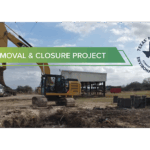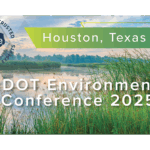
Environmental compliance is a crucial aspect of creating a sustainable and responsible community. Flower Mound, a town in Texas, recognizes the significance of preserving its environment and has implemented comprehensive measures to ensure environmental compliance. This article aims to provide an in-depth understanding of environmental compliance auditing in Flower Mound and shed light on its key elements, the role of auditing, the local regulations, challenges, and future prospects.
Understanding Environmental Compliance
Definition and Importance of Environmental Compliance
Environmental compliance refers to the adherence to laws, regulations, and standards set by environmental agencies and governing bodies. It involves meeting the prescribed requirements for air quality, water management, waste disposal, pollution prevention, and other environmental aspects. The primary goal of environmental compliance is to protect the environment, prevent environmental damage, and promote sustainable practices.
Ensuring environmental compliance is of paramount importance for both the well-being of the environment and the community residing in Flower Mound. By complying with environmental regulations, Flower Mound can minimize negative impacts on ecosystems, safeguard public health, and maintain a high quality of life for its residents.
Key Elements of Environmental Compliance
Environmental compliance comprises several essential elements that provide a comprehensive framework for maintaining ecological balance:
- Legal Compliance: The adherence to local, state, and federal laws and regulations governing environmental practices.
- Permitting and Reporting: Obtaining necessary permits for projects and ensuring accurate and timely reporting of activities to regulatory bodies.
- Environmental Impact Assessment: Evaluating the potential environmental impacts of proposed projects and incorporating appropriate mitigation measures.
- Waste Management: Proper handling, disposal, and recycling of waste materials to minimize environmental pollution.
- Resource Conservation: Efficient utilization of natural resources such as water, energy, and raw materials to reduce environmental footprint.
The Role of Auditing in Environmental Compliance
Purpose and Benefits of Environmental Auditing
Environmental auditing plays a crucial role in promoting environmental compliance. It involves systematic and independent assessments of an organization’s environmental performance, practices, and procedures. The primary purpose of auditing is to identify any non-compliance issues, potential risks, and improvement opportunities.
Conducting regular environmental audits offers numerous benefits, including:
- Compliance Verification: Audits provide assurance that the organization is complying with environmental regulations and standards.
- Risk Identification and Mitigation: Audits pinpoint potential environmental risks and allow for the implementation of proactive measures to prevent incidents.
- Performance Improvement: Audits help identify areas for improvement in environmental management systems, processes, and procedures.
- Stakeholder Confidence: A robust and transparent auditing process enhances stakeholder trust and confidence in the organization’s environmental practices.
The Process of Environmental Compliance Auditing
The process of environmental compliance auditing involves several steps:
- Planning: Define the scope, objectives, and audit criteria. Develop an audit plan and establish a team comprising qualified auditors.
- Fieldwork: Collect relevant data, review documentation, and conduct on-site inspections. Evaluate the organization’s compliance with regulations and standards.
- Analysis and Reporting: Analyze the findings, identify non-compliance issues, and recommend corrective actions. Prepare a comprehensive audit report with actionable recommendations.
- Follow-Up: Monitor the implementation of corrective actions and evaluate their effectiveness. Conduct periodic follow-up audits to ensure sustained compliance.
Flower Mound’s Approach to Environmental Compliance
Local Environmental Regulations in Flower Mound
Flower Mound is dedicated to maintaining a healthy environment and has established local environmental regulations tailored to its unique needs. These regulations encompass various aspects such as air quality, water conservation, land use, and waste management. By aligning these regulations with statewide standards, Flower Mound ensures that its environmental compliance measures are effective and consistent.
How Flower Mound Implements Environmental Compliance
Flower Mound employs a multi-faceted approach to implementing environmental compliance:
- Education and Awareness: Flower Mound conducts community outreach programs, workshops, and educational campaigns to promote environmental awareness and compliance.
- Strict Enforcement: Flower Mound enforces environmental regulations through inspections, monitoring, and enforcement actions against non-compliant entities.
- Collaboration: Flower Mound collaborates with other agencies, businesses, and community stakeholders to develop sustainable solutions and drive collective environmental compliance.
- Continuous Improvement: Flower Mound regularly reviews and updates its environmental compliance practices to stay ahead of emerging challenges and meet evolving environmental standards.
Challenges and Solutions in Environmental Compliance Auditing
Common Obstacles in Achieving Environmental Compliance
Environmental compliance auditing is not without its challenges. Common obstacles faced include:
- Complex Regulatory Framework: Navigating intricate and ever-changing environmental regulations demands dedicated resources and expertise.
- Limited Resources: Organizations may face resource constraints, hindering their ability to effectively implement compliance measures.
- Technological Advancements: Keeping up with rapidly evolving technologies and their implications for compliance can be demanding.
- Resistance to Change: Overcoming resistance to new practices or technologies can pose challenges when trying to achieve compliance.
Effective Strategies for Overcoming Auditing Challenges
To overcome the challenges associated with environmental compliance auditing, organizations can employ the following strategies:
- Robust Training and Education: Provide comprehensive training programs to enhance employees’ knowledge and understanding of environmental regulations.
- Utilize Technology: Adopt advanced software and tools to streamline compliance processes, automate reporting, and address complex regulatory requirements.
- Collaboration and Knowledge Sharing: Encourage collaboration among organizations, industry groups, and regulatory bodies to share best practices and collectively address common compliance challenges.
- Proactive Monitoring and Risk Assessment: Regularly monitor compliance indicators, conduct internal audits, and implement risk assessment methodologies to detect and address compliance gaps proactively.
The Future of Environmental Compliance Auditing in Flower Mound
Emerging Trends in Environmental Compliance Auditing
As environmental concerns continue to gain traction globally, several emerging trends are shaping the future of environmental compliance auditing:
- Data Integration and Analytics: Leveraging advanced analytics and data integration techniques to enhance auditing efficiency and accuracy.
- Automation and AI: Adopting automation and artificial intelligence solutions to streamline auditing processes and detect compliance deviations.
- Supply Chain Accountability: Extending environmental compliance auditing to include the evaluation of suppliers’ environmental practices for a more comprehensive approach.
- Sustainability Reporting: Enhancing transparency by aligning environmental compliance audits with comprehensive sustainability reporting frameworks.
Flower Mound’s Plans for Future Environmental Sustainability
Looking ahead, Flower Mound aims to strengthen its commitment to environmental sustainability through various initiatives:
- Renewable Energy: Increasing the use of renewable energy sources for municipal operations and encouraging renewable energy adoption in the community.
- Climate Change Mitigation: Implementing measures to reduce greenhouse gas emissions and adapt to the impacts of climate change.
- Green Infrastructure: Developing and maintaining green spaces, parks, and sustainable urban designs to enhance overall environmental well-being.
- Community Engagement: Engaging the community in environmental stewardship through educational programs, citizen science initiatives, and sustainable practices.
Flower Mound’s proactive approach, coupled with ongoing environmental compliance auditing practices, paves the way for a sustainable and environmentally responsible future. By prioritizing compliance, Flower Mound sets an example for other communities aspiring to preserve their natural surroundings while fostering economic growth and well-being.
As Flower Mound continues to advance its environmental sustainability efforts, the need for expert guidance and comprehensive environmental services becomes increasingly essential. ESE Partners, with our extensive experience and commitment to environmental problem solving, stands ready to support Flower Mound’s businesses and community in meeting their environmental goals. Whether you require assessment, remediation, or compliance services, our team of skilled environmental engineers and scientists is equipped to deliver innovative, sustainable solutions that not only ensure regulatory compliance but also contribute to the community’s quality of life. If you’re ready to take the next step in environmental stewardship and wish to partner with a firm that values responsible progress, Request A Proposal from ESE Partners today and move forward with confidence.








